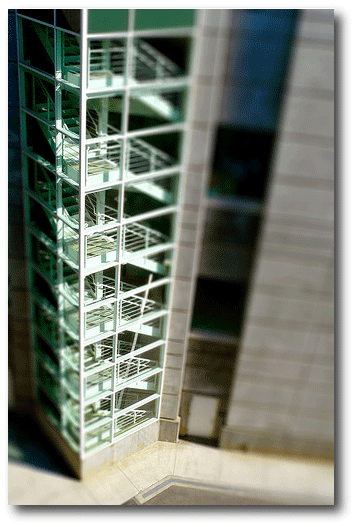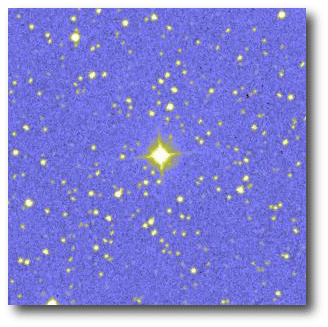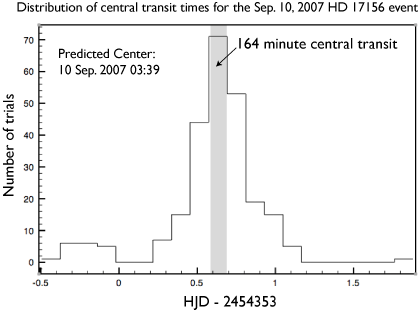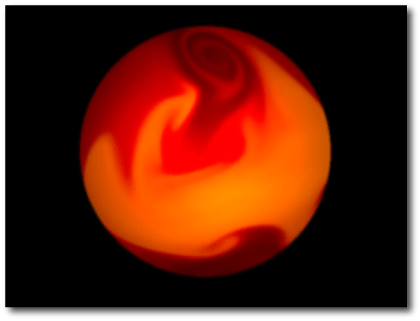
Image Source.
Last week, I wrote a post introducing HD 17156 b, a Jovian planet on a highly eccentric 21.2-day orbit around a V=8.17 solar-type star lying 250 light-years away in Cassiopeia (RA=2h 50m, Dec=72 deg).

A photometric check for transits by HD 17156 b was reported in the discovery paper, but due to the nearly three-week orbital period, it was only possible to rule out about 25% of the transit window. Given the highly favorable geometry of the planetary orbit, this means that there’s an impressive ~11% chance (8.25% if you take the discount) that the planet can be observed in transit. The expected transit depth is a very respectable 1%, and given the bright parent star, it’s a straightforward detection for small-telescope observers everywhere in the Northern Hemisphere.
What’s it worth to catch HD 17156 b in transit? From a crass cash-money standpoint, one can estimate a dollar value. Because the planet has a long period and an eccentric orbit, it would be the first transiting example of its kind, and would thus be expected to generate a fairly large number of citations. From a career standpoint, an ADS citation is worth at least $100 (see, e.g. here). Based on the citation count for the TrES-1 discovery paper (144 citations in three years) it’s reasonable to expect that at one decade out, a HD 17156 b transit would garner of order 200 citations, for a conservative total value of 20K. Given the 10% probability of the transit coming through, the resulting expectation value is equivalent to having twenty Benjamins floating down from the black velvet of the night sky.
I used the systemic console’s bootstrap utility to generate a set of orbital fits to the published radial velocities for HD 17156. Each orbital fit describes a unique sequence of central transit times. For a particular transit opportunity, the aggregate of predicted central transit times from the different fits can be plotted as a histogram. Here’s the resulting plot for the transit opportunity that’ll occur next Monday (HJD 2454353.68):

The uncertainty in the time of central transit is ~0.3 days. A window this narrow is rare for a planet that hasn’t yet been thoroughly checked. In fact, as far as Transitsearch.org opportunities are concerned, it doesn’t get much better than this. Extending our opportunity cost analysis, the expected monetary return for observations within the 1-sigma transit window is an impressive $114 per hour. (Only rarely does the expected return per hour exceed minimum wage for existing transit opportunities.)
Scientifically, a transit by HD 17156 b would certainly be very exciting. The planet should be heating up very rapidly during its periastron passage, which should spur the generation of hemispheric-scale vortices and an 8-micron light curve that’s detectable with the Spitzer telescope. Observation of the secondary eclipse (assuming it occurs) would allow for a measurement of the global planetary temperature near the orbital apastron.

The frame above is from a hydrodynamical study of HD 17156 b that Jonathan Langton has just finished computing. If all the talk of dollars, ephemerides, opportunity cost, and expectation value is leaving you stressed out, then just kick back with this fat 1.0 MB .mov of the simulation and get your groove on.

Hi Greg,
actually, I think someone attempting this must hurry. The COROT project informally announced at the European Planetary Science Conference that they have a 33 day period transiting planet candidate. It seems that they are already doing the radial velocity follow-up of the candidate.
Check out this blog entry:
http://www.planetary.org/blog/article/00001089/
Cheers,
Luis
Hi Luis,
Thanks very much for that link! That’s quite an informative blog article, and it sounds like CoRoT is doing a a very good job.
It’ll be very interesting to see more details with respect to their 33-day transiting planet. That object will be right on the ~500K borderline of being able to form water clouds in its atmosphere, and may even be cycling back and forth between clear and cloudy weather.
I’ll do my best to get the word out worldwide regarding the HD 17156 opportunity on the 10th. I’d have a ready-made systemic post if an ad-hoc group of small telescope observers were to scoop a 150-million Euro mission ;)
best,
Greg
Would a 500 K object be able to form water clouds? If I take a look at this phase diagram of water, it seems the pressure at which water condenses at 500 K is a few tens of atmospheres, but wouldn’t the planet be warmer at that depth?
Sudarsky et al. (2003) states that “H2O will condense homogeneously at temperatures below ~250 K”.
Pingback: systemic - HD 17156 at inferior conjunction (right now!)
Hi Greg,
I observed HD17156 in the transit window. Unfortunately the night was windy,
affecting the small telescope so the photometry is not so clear as we would wish. Anybody else observed?
It’s possible that I have a central transit. I can show you some plots if you want.
I will try to observe again on december 3 (I think that is my next opportunity).
Regards,
Jose